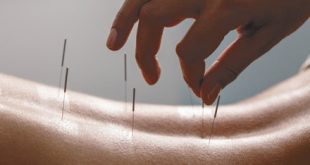Did you know in 2019 nearly 5.4 million cases of non-melanoma skin cancer were diagnosed in 3.3 million people?


Most skin cancers are caused by the sun’s UVA and UVB ultraviolet (UV) rays. UVA and UVB rays cause DNA damage, which greatly increases skin cancer risk. According to Physicians Regional Medical Group dermatologist, Jaqueline Thomas D.O., FAOCD, broad-spectrum sunscreen will protect against UVA and UVB light with an SPF of 30 or higher and is what is recommended for the Florida sun.
When it comes to sun safety, sunscreen should not be the only tool in your arsenal, though it is one of the major steps you can take to protect your skin. Dr. Thomas recommends, “A golf ball size or a shot glass amount is the quantity recommended for one body application. Most people do not use that much. Re-application of that quantity should be applied every 2 hours of exposure. Broad-brimmed hats, sunglasses, and sun-protective clothing, with UPF of 50+ or higher can help too. Baseball hats are great, but the nose, cheeks, chin, and ears should have sunscreen as well since the bills of the caps do not protect those areas.”
Dr. Thomas also warns that even when the sun is not shining it is important to be aware that UV light from the sun can still affect your skin. “UV light from the sun is reflected off of surfaces that can impact your skin on cloudy days and on sunny days. Water, snow, concrete, and asphalt are such surfaces that can reflect these rays onto the skin.” She adds, “While driving, the sun will come through the windows and affect the tops of hands and the left side of the neck and face.”
When it comes to children, it is important to instill the importance of sun safety and learning sun protection habits early on. Dr. Thomas says, “The use of sunscreen should become second nature to children. You would not have a child get into a car without a seatbelt, the same should apply to children and sunscreen. Skin damage starts early when not protected.”
What can you do at home to be sure your skin has no irregularities? Follow the ABCDE’s of pigmented lesions:
• A – Asymmetry: Draw a line down the center of a lesion, if the two sides do not match identically, the lesion is asymmetric and is, therefore, something to be checked.
• B – Borders: Irregular borders that are scalloped, jagged, and uncertain where they stop or start, notches, should be evaluated.
• C – Color: One monotonous color is usually safe. If there are multiple colors, this can be a warning sign.
• D – Diameter: If a lesion is larger than 6mm, or the size of a pencil eraser, it should be examined.
• E – Evolving: A patient should know their skin better than their doctor or anyone else. If a lesion is changing or evolving over time, that can be suspicious.
Remember that some melanomas occur in moles that we already have. When in doubt, get it checked out.
Dr. Thomas is located at 8340 Collier Blvd. Naples, FL, 34114. To request an appointment, please call (239) 348-4221 or visit PhysiciansRegionalMedicalGroup.com.
Resources:
1. https://www.cancer.org/content/dam/cancer-org/online-
documents/en/pdf/infographics/skin-cancer-prevention-
infographic-print.pdf
 Southwest Florida's Health and Wellness Magazine Health and Wellness Articles
Southwest Florida's Health and Wellness Magazine Health and Wellness Articles

